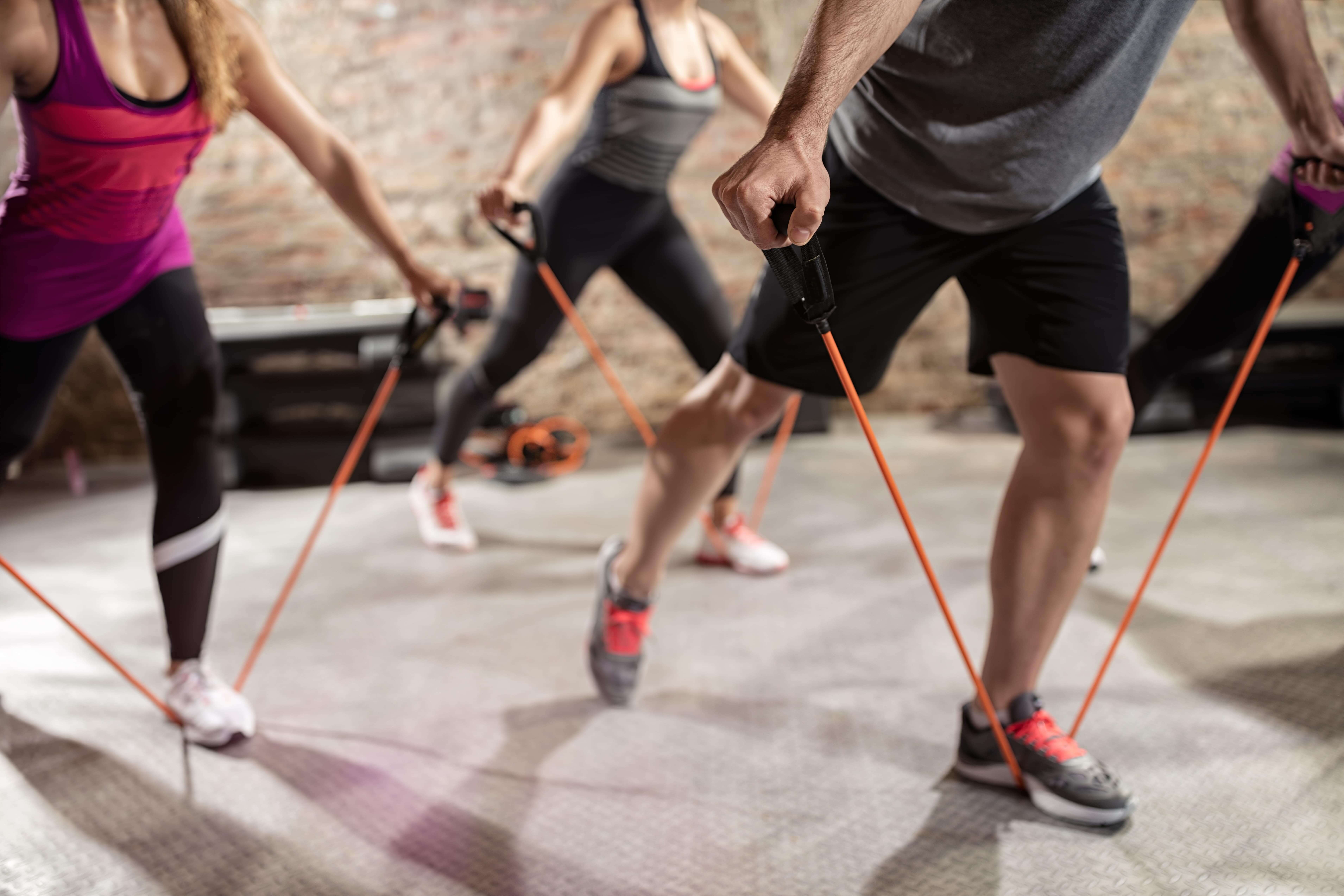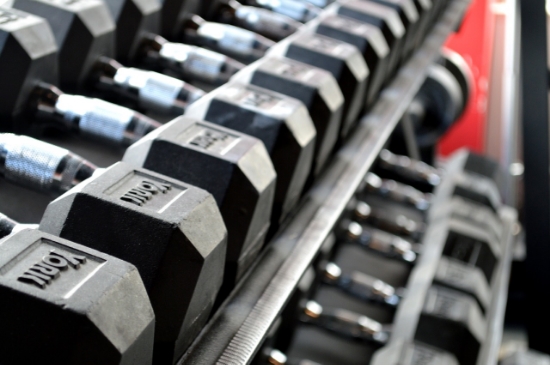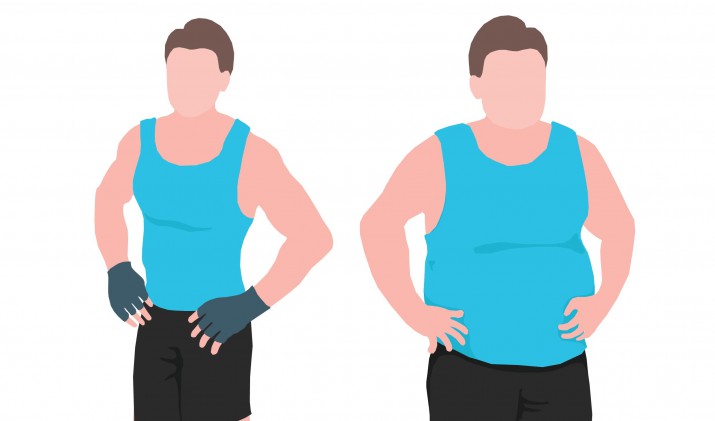
There is a multitude of ways to get in shape through exercise. Just like how there is a multitude of ways to follow a healthy diet.
Every health guru has a preferred way of doing things and like every other area within life. Just about every guru has something bad to say about every other modality, other than their own of course. Sadly, this is the reality that creates so much confusion for everyday people who are simply trying to understand what it is that they should be doing. You have groups of people that will fight to their death by saying that yoga is the best method for correcting postural deviations and establishing healthier movement patterns. You have groups of people who will fight to their death by saying that conventional exercises, whether they are dumbbell, barbell, or equipment-related exercises, provide the most amount of resistance to isolate the muscles that are responsible for posture and movement.
Also, you also have groups of people who believe that Olympic lifting, CrossFit, plyometrics, or whatever other modalities that people enjoy, is the all-around greatest form of exercise.
But here’s the one thing that very few want to acknowledge; all of these modalities can get people fit and healthy if they are performed properly. And most importantly if the person performing them enjoys them. A workout routine that is perfect for one person may not be perfect another person; whether this is due to physical ability or pure preference. So, these two factors should be the first things you consider before establishing an exercise routine; are these exercises designed with you in mind or are they going to further engrave poor movement patterns? And also is this something that you would enjoy doing?
These are all tried and true options for exercise.
But can we clear up the confusion about which is best for everyday people like you and me? I have the answer that you’ve been looking for.

Now, when I first started recovering from the three herniated discs in my lower back, I knew that I needed to figure out how to not only work out in the safest manner but also the most efficient way possible. I needed something that would allow me to get back to full ranges of motion (to restore my mobility); something that would overload the muscles and keep me moving to induce fat loss and lean muscle growth; something that wouldn’t add onto but rather correct the imbalances across my body caused by my previous injuries/heavy weight lifting/and our modern lifestyle. Plus I also needed something that would allow me to simply enjoy moving again without pain.
This is when I discovered the power of bodyweight and resistance bands.
I’ll only discuss the importance of resistance bands in this article. If you’d like to find out how we utilize bodyweight to retrain the nervous system as we progress into our programs, check out our other blog that lays out our entire “MED approach.” In that article, I’ll break down exactly how we progress our clients through assisted bodyweight movements, into unassisted bodyweight movements, mixed with and followed by resistance band movements. And finally, this is ideal when someone can start adding in free-weight to their training regimen. If you notice, people often overlook that sequence, especially when trainers toss new clients right into weightlifting.
If you had known me before my injury, back when I was able to deadlift well over 500lbs, squat 400lbs+, and bench press 350lbs+, I would tell you that strength training with weights and equipment was the all-around best approach to getting in shape. This was obviously before I set out to try and understand what all of the other modalities were about. To me, like the rest of the “bros” in our society, weightlifting was the only real approach. But once the reality set in that lifting heavy weights can get you in shape. But it can also ruin your body if the smallest errors exist. It forced me to open my mind.
I don’t want to downplay any of the other forms of exercise beyond resistance bands but let me just explain to you why I believe that incorporating resistance bands is the most fundamental, functional, convenient, safe, dynamic, and efficient way to recapture your health.
For starters, yoga-type modalities are an amazing way to correct poor movement patterns.
It reengages your nervous system towards a more natural posture. With that being said, the resistance that is being applied to your muscles is often subpar to what is needed to induce real muscle growth and especially fat loss, although the mobility improvements can’t be understated.
Conventional and other weighted exercises, on the other hand, are great for isolating specific muscle groups. It helps increase their strength, size, and often their mobility (if performed through a full range of motion). With that being said, the movements rarely mimic functional movements that you’d be expected to perform during your normal everyday life and as a result. The nervous system is still not being trained to recruit muscle in the most natural manner that would aid in the normal movements of life. Instead, your muscles will begin to recruit what creates the strongest response to the imposed exercise, rather than what is the most natural.

Even if the movements are functional with conventional weighted exercises, there are still plenty of issues that arise beyond that. The main issue and this is certainly the most important to me and anyone else who has experienced back pain is that the resistance that you are moving against is always in one plane of motion. Think about this; when we move weights, gravity is pulling it back down towards the ground, period. There is no other variation to the movement that you are performing, you are simply always fighting gravity. Sometimes this is good, but most of the time it unnecessarily loads the spine. It overloads joints in positions where they are more vulnerable. It even limits the number of muscle fibers that you want to target (which then limits growth and fat loss potential).
So, is working out while directly opposing gravity the safest and most efficient method?
Probably not. And it only stands to reason because your body isn’t only moving up and down throughout life. You have all of these other movements that are taking place which require different muscles to aid in additional movements, other than those simple up and down motions. Not only does your body need to know how to work synergistically between every working muscle. It also needs to be strengthened in other various planes of motion to target the stabilizing muscle groups.
Needless to say, there are benefits to every modality of exercise, from yoga to conventional weightlifting. But is there a way to reap the benefits of each? What if we could combine both approaches, the yoga-type, and the conventional-type, to reduce the negatives and take advantage of their positives? That’s where resistance bands come in.
Take this study for example:
Back in 2018, the researchers of the Norwegian University of Science and Technology and within the Department of Neuromedicine and Movement Science were holding an experiment to determine whether or not resistance band training stacks up against the more common conventional weightlifting [1]. This study didn’t investigate every exercise since that would take an unnecessary amount of time. But it did pick two staple exercises: the pectoral fly and the rear deltoid (reverse) fly. Both of these are relatively safe exercises for your joints (if the form remains proper). These are wonderful exercises for really targeting these two muscle groups.
But what was interesting about their findings was that both forms of resistance created a similar stimulus on the primary muscle that was being targeted. In this situation, it was the chest and upper back/shoulders. This means that the results/gains were near similar between the two modalities. If this wasn’t surprising enough, they also discovered that through resistance band training, the stabilizing and supporting muscle groups surrounding the working joint were engaged to a much further extent.
So, not only did they find out that resistance bands were capable of inducing the same fat-loss and muscle growth responses as conventional weight training (plus a plethora of other studies have reported the same findings). They also found that this method strengthens more supporting musculature that conventional weight lifting often neglects.
This simple finding has some big implications.
First, the exercises will be safer since it is causing larger recruitment from supporting muscles. Second, the overall muscle growth will be greater due to its targeting additional muscle groups beyond just the primary. Third, it provides horizontal resistance as opposed to just the simple up and down (vertical) resistance. And horizontal is not only more functional, but it also ensures that an even amount of strength and force is being distributed throughout all-natural ranges of motion.

Now, obviously, resistance bands are more convenient since you can perform these exercises just about anywhere that you go.
You don’t have to haul around hundreds of pounds of weight/equipment. But clearly they promote greater functionality, which is why their popularity really grew within the rehabilitation community. They have the same potential as weight training for inducing muscle growth and fat loss. They’re a safer alternative to explosive power training due to the type of resistance being applied; similar to the safer resistance found within the water. Plus they also reduce the opportunity to cheat (which limits growth and fosters poor form/posture).
Without using weight, there can be no momentum gained from swinging your body to accomplish a lift.
Resistance bands don’t have the same physical properties as weight. Take a bicep curl, for example, normally you could swing your body to “aid” in this movement. But with resistance bands, this would be pointless. Also, think about another concept that gives resistance bands an advantage overweights. For this example, consider a preacher curl, which if you are unaware, is an exercise where you are sitting down with the backs of your upper arms (triceps) against a pad and you simply curl a dumbbell towards your face.
When the exercise first starts off, your arm is almost fully extended, and the weight is probably feeling incredibly heavy. This is because your bicep is in a weaker position due to it being lengthened. Plus gravity is pulling the weight downward in this weaker position. But, when you reach the endpoint of this exercise where the weight is by your face or above your shoulder, there is very little force being applied to your bicep and the weight will feel much lighter.
This is because your bicep is in a stronger position when it is contracted and all “bunched up,”. Plus the weight is now above your bicep. Gravity is still pulling the weight downward rather than away from you. In other words, your resting arm is now supporting downward the force rather than using the pulling effect of the bicep. What this means is that the bicep isn’t being fully used in its strongest (most contracted) position.
So, how do we correct this?
Well, picture this; a band pulling on your hand in a creating horizontal force (away from you) rather than the vertical direction of weight (downward). This would be pulling your arm into an extended position, forcing your bicep to counteract that pull throughout the entire movement.
Not only that, but the resistance will be increasing as your muscle contracts and the band tightens, unlike using a weight which progressively gets easier as you continue through the movement. So, not only it will force you to cheat less (keeping you safer). You can target more muscle fibers by actually training your muscles in their strongest position. And as you can tell, sometimes the best way of accomplishing this is by breaking away from the strict up and down motions of the modern-day exercise. In other words, you can capitalize on the gains that conventional weightlifting offers plus shock the system further using additional, more natural planes of motion.
Weights are undoubtedly great for getting in shape, but is it the only approach? Is it the safest approach? Is it the most effective approach?
I don’t think so. I hear of too many trainers and coaches that throw a new client under a barbell or set of dumbbells. Yet those clients can’t even perform the basic movements of life. Their bodies have forgotten how to move properly. Without training the body to move properly first, let alone properly under resistance, we are almost guaranteed to recruit the wrong muscles. This means an increase in the risk of injury, less targeted growth, and more imbalance. It also means an overall decrease in the longevity of the body.

To summarize, if anyone told that weightlifting and performing the stereotypical gym workout is the only approach to recapturing your health, they have been lying to or that other person simply hasn’t looked into the research behind the other modalities. Resistance bands offer the same benefits as weight training and then some. Although it doesn’t sell gym memberships and it does encourage self-empowerment (which means less money for trainers, coaches, and gyms).
But, if we’re actually out to help other people improve their health and their lives, self-empowerment rather than trainer-reliance is the only answer.
If you’re recovering from an only injury or a lifetime of imbalances from our lifestyles, if you’re less active than you probably should be, if you have less experience with exercise than you’d like to be, and if you want to experience how you would feel with a good looking, healthy body that operates as it should, this is the best place to start. If you don’t believe what current science suggests about the utility behind resistance band training, believe that it is possible because I did it myself and so could you.
And as they say, if there’s a will – there’s a way.
But let me tell you something that not many will say either. As a result, many of us have learned the hard way; that “will” can be dangerous when the “way” is misguided. Sometimes, only using or following one “way” may not be the most effective. Especially when the “way” is out of date and leading you away from either true progress or true enjoyment. If you’re looking for a (not-so) new approach to fitness outside of the big box gyms, the heavyweights, the constant need for a spotter, the painful joints, and everything else that people experience at such an alarming rate, put that amazingly powerful “will” behind a (not-so) new “way”. Get after those resistance bands, the future is yours.
As always, stay positive my friends,
-Christian
Reference:
- Bergquist, R., Iversen, V. M., Mork, P. J., & Fimland, M. S. (2018, March 23). Muscle Activity in Upper-Body Single-Joint Resistance Exercises with Elastic Resistance Bands vs. Free Weights. Retrieved from https://www.ncbi.nlm.nih.gov/pmc/articles/PMC5873332/



